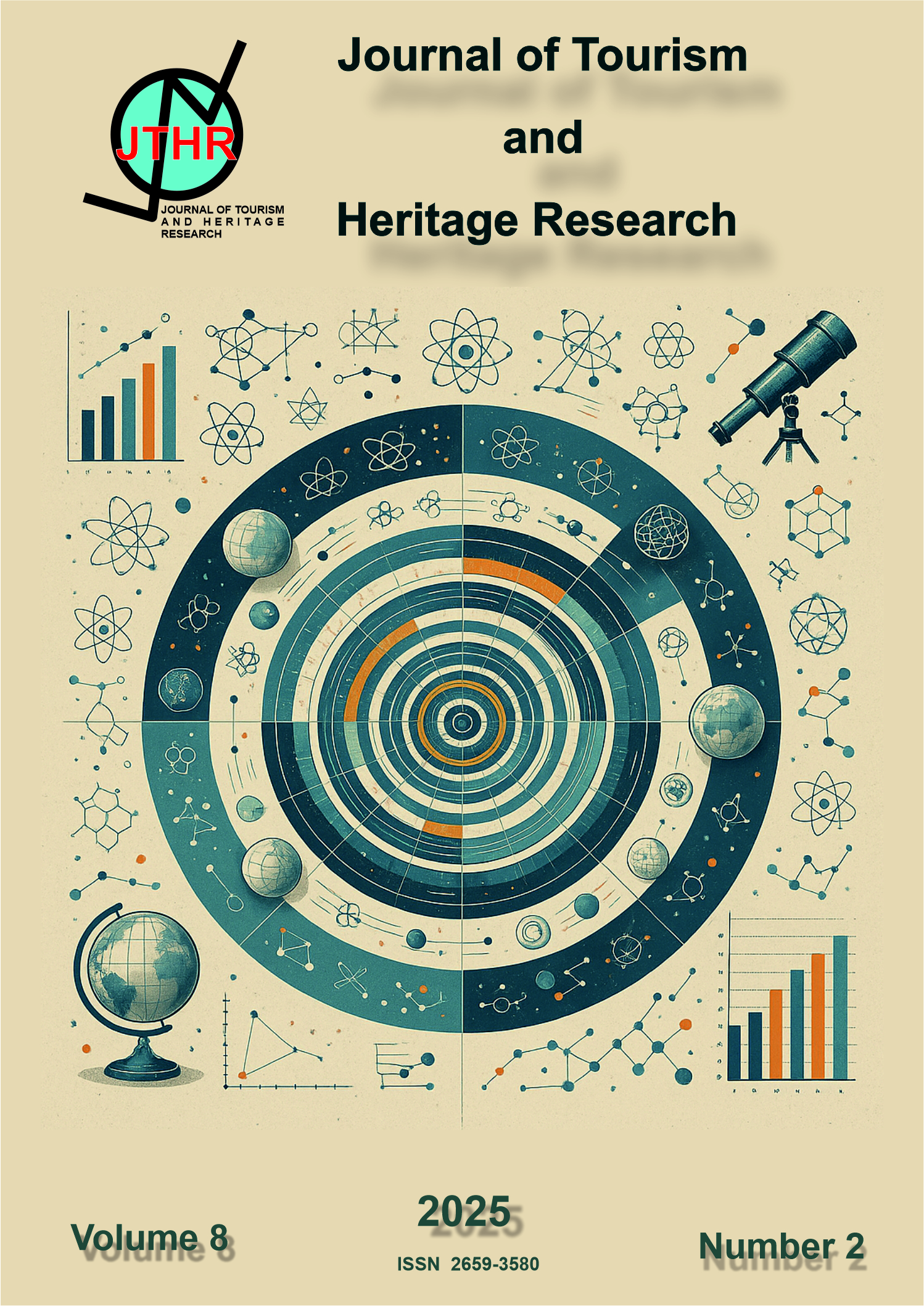Exploring the potential of promoting Sri Lanka as a meditation tourism destination in Sri Lanka's wellness tourism landscape
Abstract
With the growing demand for health and wellness sector, travelers always consider balance between physical, mental, and, emotional well-being of their everyday life leading for meditation tourism to become an integral part of the wellness tourism sector. As Sri Lanka is a country that is uniquely positioned to leverage its cultural, spiritual, and, natural resources, this study explores the potential of promoting Sri Lanka as a meditation tourism destination by identifying its strengths, weaknesses, opportunities, and threats, alongside with an examination on the roles played by its key stakeholders. This qualitative study which employs an exploratory strategy, underwent semi-structured interviews with 15 suppliers of wellness and meditation tourism, who are registered under the Sri Lankan government body of Sri Lanka Tourism Development Authority (SLTDA), were considered as the sample. Afterwards, qualitative thematic analysis was conducted to analyze the collected data. The findings revealed that there are notable strengths and opportunities rather than weaknesses and threats in order to promote Sri Lanka as a niche meditation tourism destination. Most of the stakeholders have high power and interest in promoting Sri Lanka as a niche meditation tourism destination and it is noteworthy to state that several stakeholders are find it difficult in promoting Sri Lanka as a meditation tourism destination due to financial limitations, lack of resource flexibility, and constraint of culture. However, they pinpointed the necessity of coordination between the public sector, private sector, and non-governmental organizations to promote Sri Lanka as a niche meditation tourism destination. Overall, the study provides recommendations for improving Sri Lanka’s position in the global wellness tourism market and strategies to attract global tourists specifically for this emerging segment.
References
Baum, T. (2008). The social construction of skills: a hospitality sector perspective. Eur. J. Vocat. Train., 44.
Bergh, M. (2013). Stakeholder collaboration in tourism development: the case of Veerse Meer, the Netherlands. Tour. Mar. Environ., 9, https://doi.org/10.3727/154427313x13818453739558.
Fonseka, N., & Pavithra, K.H. (2021). Analysis of the potentials for promoting Sri Lanka as a wellness tourism destination. SEUSL J. Mark., 6(1), 44–52.
Global Wellness Institute. (2022). The Global Wellness Economy: Looking Beyond COVID 19.
Huy, N. (2018). A systematic literature review of stakeholder’s collaboration in tourism settings,18(4), 571–599.10.31235/osf.io/gk2hs.
Jayasinghe, R., & Wimalaratana, W. (2022). Role of spiritual tourism to develop Sri Lanka tourism after COVID-19: With special reference to expertise perceptions based on meditation centres. J. Tour. Econ. Appl. Res., Special Issue 2020.
Jayasinghe, R. (2022). Exploring tourist perceptions on Buddhist temple stay programs in Sri Lanka. EPRA Int. J. Econ. Bus. Manag. Stud., 8, 56–64. https://doi.org/10.36713/epra7823
Khanal, B. P., & Shimizu, T. (2019). Potential of health tourism development in Nepal: Literature review and future view. J. Tour. Sustain., 2(2), 14–22.
Liu, B., Kralj, A., Moyle, B., He, M., & Li, Y. (2024). Perceived destination restorative qualities in wellness tourism: The role of ontological security and psychological resilience. J. Travel Res., 64(4), 835–852. https://doi.org/10.1177/00472875241230019
Matko, K., & Sedlmeier, P. (2019). What is meditation? Proposing an empirically derived classification system. Front. Psychol., 10, 2276. https://doi.org/10.3389/fpsyg.2019.02276
Pattiyagedara, S. S., & Fernando, P. I. N. (2020). Rural tourism niche-market as a development strategy on rural community: Reference to Hiriwadunna Village Track, Meemure and Heeloya Knuckles Valley Tourism Village, Sri Lanka. Sri Lanka J. Manag. Stud., 2(1), 87–103. https://doi.org/10.4038/sljms.v2i1.29
Perera, R. (2022). The utility of yoga and Buddhist practices in Sri Lanka’s wellness and spiritual tourism. Trivalent: J. Archaeol. Tour. Anthropol., 3, 12–21. https://doi.org/10.4038/tjata.v3i2.74
Sadekar, P., & Pereria, N. (2018). Health and wellness tourism: A study on Ayurveda spa treatment. Tour. Innov., 8(2), 28–36.
Samarathunga, W.H.M.S. (2020). Post-COVID19 challenges and way forward for Sri Lanka tourism. http://dx.doi.org/10.2139/ssrn.3581509
Sammani, U., Tennakoon, T., & Ranasinghe, R. (2020). Religious tourism development potentials at Anuradhapura UNESCO World Heritage City
Sivanandamoorthy, S. (2022). Marketing strategies for empowering wellness tourism in the post COVID-19 pandemic era in Sri Lanka. SEUSL Journal of Marketing, VII, 44–66.
Smith, M., & Puczkó, L. (2008). Health and wellness tourism. https://doi.org/10.4324/9780080942032
Sugathapala, S. (2024). Navigating tourism in Sri Lanka: Challenges and opportunities amid high inflation. Glob. Sci. J., 11, 633–638.

This work is licensed under a Creative Commons Attribution 4.0 International License.
1.The works published in this magazine are subject to the following terms: Tourism Research Association (the publisher) preserves the patrimonial rights (copyright) of the published works, and favors and allows the reuse of them under the license of use indicated in point 2.
© Investur, 2017
2.The works are published in the electronic edition of the magazine under a Creative Commons Attribution-NonCommercial-NoDerivative 3.0 Spain (legal text) license. They can be copied, used, disseminated, transmitted and publicly displayed, provided that: i) the authorship and the original source of their publication (journal, editorial and URL of the work) are cited; ii) are not used for commercial purposes; iii) the existence and specifications of this license are mentioned.
3. Self-file conditions. Authors are allowed and encouraged to disseminate electronically the pre-print versions (version before being evaluated) and / or post-print (version evaluated and accepted for publication) of their works before publication, since it favors their circulation and earlier dissemination and with it a possible increase in its citation and scope among the academic community.


